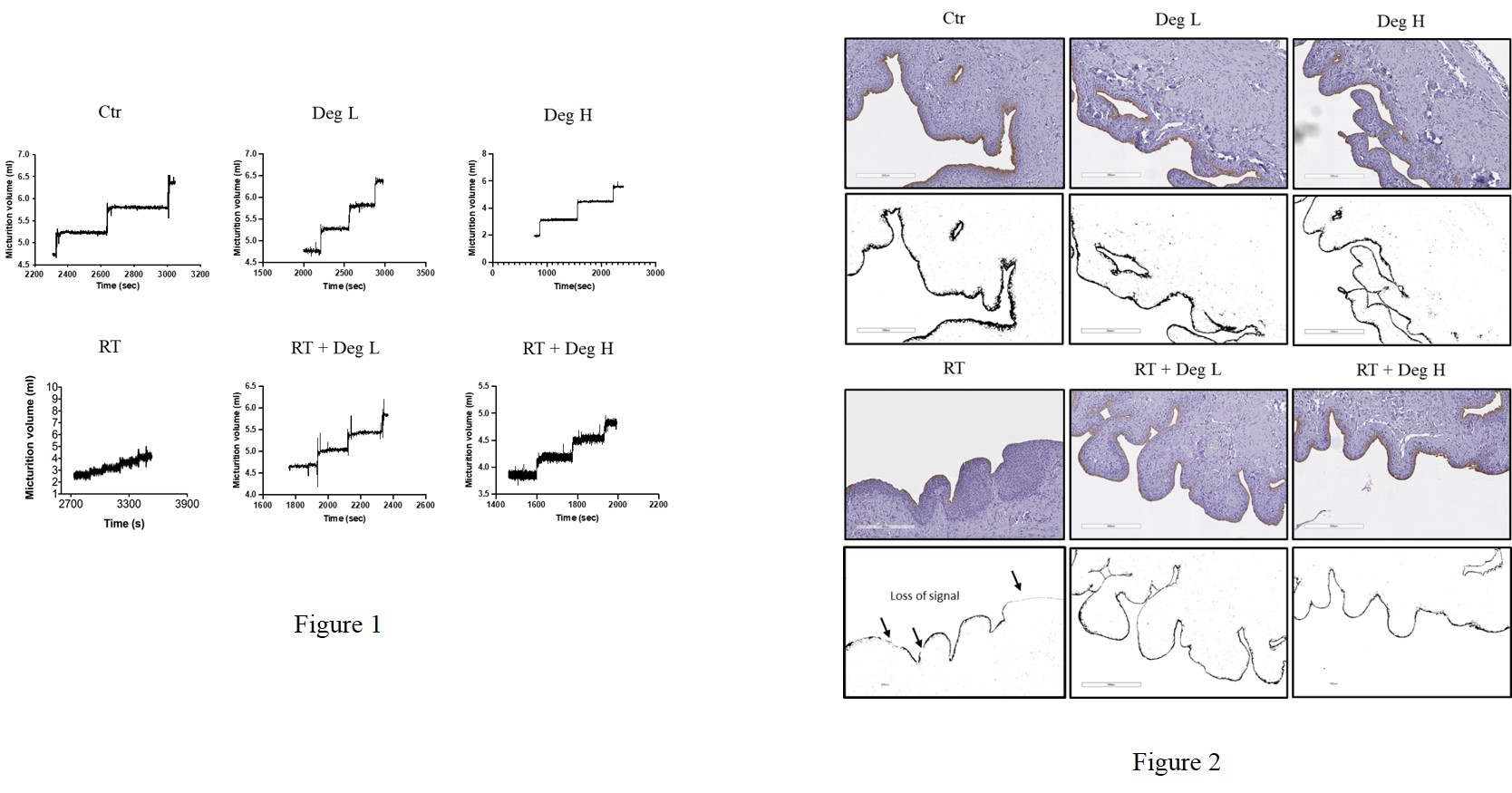Androgen deprivation therapy reduces the RT-induced bladder toxicity in a pre-clinical model
MO-0727
Abstract
Androgen deprivation therapy reduces the RT-induced bladder toxicity in a pre-clinical model
Authors: Riccardo Vago1, Federica Vurro1, Giorgia Colciago1, Giuseppe Fallara2, Stefania Zuppone1, Lisa Alborghetti3, Nadia Di Muzio4, Antonello Spinelli5, Claudio Fiorino3, Cesare Cozzarini4
1IRCCS San Raffaele Scientific Institute, Urological Research Institute - Division of Experimental Oncology, Milano, Italy; 2IRCCS San Raffaele Scientific Institute, Department of Urology, Milano, Italy; 3IRCCS San Raffaele Scientific Institute, Department of Medical Physics, Milano, Italy; 4IRCCS San Raffaele Scientific Institute, Department of Radiotherapy, Milano, Italy; 5IRCCS San Raffaele Scientific Institute, Experimental Imaging Centre, Milano, Italy
Show Affiliations
Hide Affiliations
Purpose or Objective
Radiotherapy (RT) is an effective treatment option for prostate cancer as well as other pelvic tumors. One of the most disabling side effects experienced by patients is represented by the actinic cystitis, due to partial irradiation of the bladder, which reduces bladder capacity, impairs voiding function and may cause incontinence and urinary bleeding. Anti-androgens have been suggested as potentially useful in reducing urinary toxicity in exploratory pre-clinical studies and in few clinical series. The current study was focused on the potentials of the anti-androgen Degarelix (Deg) to reduce urinary toxicity in an animal model.
Material and Methods
First, we established a rat model of radiation-induced cystitis and we followed its evolution over time by measuring the functional parameters through recordings of micturition pattern and cystometry and by investigating the structural alterations through immunohistochemistry as uroplakin staining and collagen deposition. We then tested the effect of Deg to improve radiation cystitis. Groups of rats receiving RT, Deg, RT+Deg, and non-treated control were compared focusing on late toxicity, i.e. 6 months from RT. RT was delivered through the image-guided irradiator XRAD225Cx SmART (PXI North Branford, CT, USA).
Results
To set up the rat model, we tested a range of radiation doses ranking from 25 to 40 Gy as single fraction at different time points. After 6-8 months, the animals belonging to the high dose RT group experienced an increased micturition frequency compared with controls (Figure 1). The impairment of bladder compliance is associated with a structural damage of the urothelium, which loses its continuity after RT (Figure 2) together with fibrosis. We tested the effect of Deg at a concentration inducing a testosterone suppression to castrate levels (Deg H). A single administration of Deg before irradiation restores the bladder functionality to normal condition according to micturition intervals and significantly reduces the urothelium damage, showing an integrity comparable to untreated animals, as well as the collagen deposition.
Notably, a second, halved concentration of Deg (Deg L) was capable to achieve similar results in terms of urodynamic parameters as well as of structural alterations, indicating that the androgen depletion therapy can be beneficial even at lower doses, which are likely to cause less side effects.
Conclusion
Our pre-clinical model of RT-induced bladder damage allowed to monitor the disease development and to test therapeutic solutions. In particular, the androgen-deprivation therapy resulted effective to counteract the functional impairment and structural alterations of the bladder, paving the way to exploit the potential of this approach in clinical practice.
